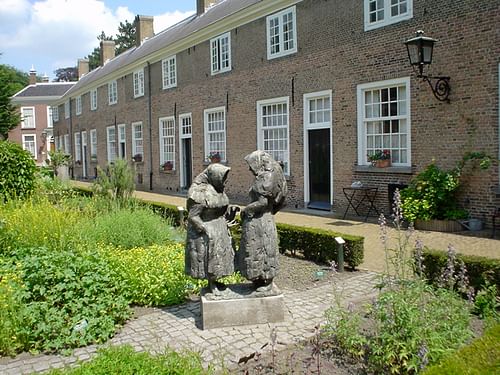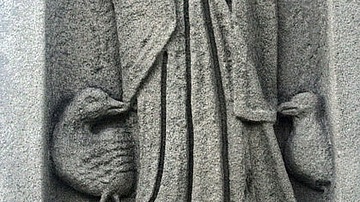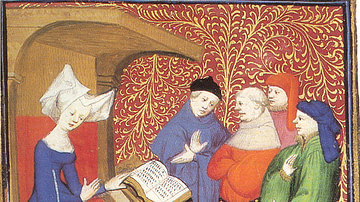The lives of women in the Middle Ages were determined by the Church and the aristocracy. The medieval Church provided the 'big picture' of the meaning of life and one's place while the aristocracy ensured that everyone stayed in their respective places through the feudal system that divided society into three classes: clergy, nobility, and serfs.
Women's place in the clergy was restricted to the nunnery. Noble women's positions were dictated by how much land they brought to marriage because land equaled power; therefore the quality of life and opportunities for autonomy could vary significantly among the upper class. Women of the lowest class actually had more freedom of expression than the other two because life was uniformly difficult for the serfs – male or female – and women worked alongside men in the fields and in the medieval guilds as equals or near-equals.
Women's rights and opportunities in the Middle Ages were not uniform, however, even though those of the lower class had the least amount of variation. Scholars divide the Middle Ages into three periods:
- Early Middle Ages – 476-1000
- High Middle Ages – 1000-1300
- Late Middle Ages – 1300-1500
The rights of women from the earliest era through the last grew significantly owing largely to two distinct factors: the increasing popularity of the Cult of the Virgin Mary and the development of the concepts of courtly love and chivalry. Women's status and opportunities would also expand after the outbreak of the Black Death pandemic of 1347-1352 which killed so many that women were allowed to assume ownership an operation of their late husband's businesses. Women's rights would reach their apex in the Late Middle Ages at which time more restrictions were implemented by the patriarchal system primarily because women's social positions threatened the status quo.
Changing Attitudes Toward Women
The Cult of the Virgin Mary was not new to the Middle Ages. Mary had been declared the Mother of God by the Church in 431 at the Third Ecumenical Council. Mary's high standing, however, did little to elevate women's status in society. The Church both demonized and elevated women through the dichotomy of the biblical tale of Eve – who caused humanity's fall from grace in the Garden of Eden – and that of the Virgin Mary whose son was believed to have redeemed that fall. Women were simultaneously considered the source of all the ills of the world and the means of that world's redemption through the birth of Jesus Christ.
Accordingly, women were at once denied the same social status as men while legally being recognized as a man's partner, helpmate and, under certain conditions, even his equal. The view of women as either evil temptresses or virginal goddesses left no middle ground for a reasoned perception of woman-as-individual. In the Early Middle Ages, the woman-as-temptress model prevailed as clergy emphasized Eve's role in the fall of man. From the 12th century, during the High Middle Ages onwards to the end, the Cult of Mary was more popular and so the perception of women improved.

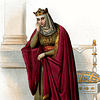
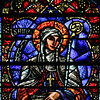

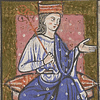
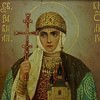
A Gallery of 30 Influential Women from the Middle Ages
Even so, women were still collectively demonized even at the height of the cult's popularity for failing to mirror the Virgin Mary's perfection. Women were certainly seen in a better light than they had been previously but this did not mean the clergy, aristocracy, or males in general were interested in seeing them elevated above their supposed God-given place as made clear in the Bible in such passages as I Corinthians 11:3 where it states that man is the head of the woman or I Timothy 2:11-15 which makes clear that women are subordinate to men and Eve was the first sinner. Women were therefore always linked to Eve while, at the same time, they were elevated by association with Mary. Scholar Eileen Power comments:
In considering the characteristic medieval ideas about woman, it is important to know not only what the ideas themselves were but also what were the sources from which they spring. The expressed opinion of any age depends on the persons and the classes who happen to articulate it; and for this reason alone it often represents the views of a small but vocal minority. In the early Middle Ages, what passed for contemporary opinion came from two sources – the Church and the aristocracy. (9)
Power goes on to point out that these two sources – the one celibate and the other regarding women as an 'ornamental asset' – were the least qualified to write on women. In spite of the 'official' view of women as second-class citizens found in these sources – especially sermons and other ecclesiastical works – household records, legal documents, guild records, and other documents show that women throughout most of the Middle Ages made a living in the same trades as men, frequently took over a business following their husband's death, and were valued merchants, artists, and artisans.
Women's Rights
Throughout the Middle Ages, lower-class women were bakers, brewers, milkmaids, barmaids, artisans, weavers and, primarily, tenant farmers who worked alongside their husbands and children in the fields. The feudal system dictated that the land belonged to the lord, who rented it to his tenants – the serfs – who were bound to that land. The lord controlled every aspect of the serf's life and this extended to a man's wife and daughters.
The lord decided who a girl would marry, not the girl's father, because the daughter of a serf was essentially property of the lord just as her father and mother were. Once the girl was married, her husband controlled her interests and was responsible for her behavior and, for this reason, women are not mentioned as often as men in legal matters in the Early Middle Ages. The woman's husband would be sued if a woman transgressed, not the woman herself. The woman's job was to take care of the home, help her husband at his work, and produce children. Power writes, “the great majority of women lived and died wholly unrecorded as they labored in the field, the farm, and the home” (Loyn, 346).
The hierarchy of medieval society was rigidly maintained, and one very rarely rose above the station one was born into. There was no middle class and the only hope for a woman to better her situation, without marrying, was to enter a religious order. There were women who chose this route in hopes of education, which many received, but many others were largely disappointed.
Priests, for the most part, saw no benefit in literate nuns. Even Ende (10th century), the famous female manuscript illuminator from Spain, was most likely illiterate. Nuns learned their prayers and devotions by memorizing what they heard recited, not from reading books, although it is thought that many young women of means learned to read from the popular devotional work known as the Book of Hours.
Legal & Economic Status
An emphasis on trade during the High Middle Ages provided greater opportunity for women. During this period, in Spain and France initially, the middle class began to emerge as merchants amassed enough wealth to be able to influence political matters. The medieval guild had a great deal to do with the emergence of the middle class and also was responsible for increased rights and responsibilities for women.
Women of the new bourgeoisie could work with their husbands and fathers in a given trade and frequently succeeded the male as head of the business upon his death. Woman-as-cheap-labor was a concept already well-established through the feudal system and was perpetuated by the guild system because women were legal non-entities and so could be paid less than a man. At the same time, many women during this period appear in legal documents as having been fined for various trespasses instead of their husbands, a significant departure from the precedent of the Early Middle Ages.
The lowest class of the serfs and the upper-class noble women continued to live more or less as women had before them and both were tied to the land in one way or another. Power writes:
Among the nobility, marriage was a critical factor in the transmission of land and fiefs and was arranged by families with great care, often with little consideration for the preferences of the parties involved, one or both of whom might be children. Only in periods and places where women had personal rights over land did they exercise much independence. (Loyn, 346)

Depiction & Involvement in Art
By the time of the High Middle Ages, when the Cult of the Virgin Mary was increasing in popularity, more noble women were exercising power and some to such an extent as to significantly change their culture's perception of women. Two of the most powerful women of this era were Eleanor of Aquitaine (l. c. 1122-1204) and her daughter Marie de Champagne (l. 1145-1198). Eleanor was one of the most powerful political figures – male or female – in the Middle Ages as a whole. She was the wife of Louis VII of France (r. 1137-1180) from 1137 until the marriage's annulment in 1152 when she married Henry II of England (r. 1154-1189). Eleanor took part in the Second Crusade along with her ladies-in-waiting, managed her own estates and finances, and was an important patron of the arts, especially of romantic literature.
Scholars continue to debate Eleanor's role in the development of the concept of courtly love and the chivalric code, but there is no doubt that many of the major French authors of the best-known works on this subject (such a Wace, Andreas Cappelanus, Bernart de Ventadorn) enjoyed her patronage. Her daughter Marie is said to have either helped her mother develop these concepts at Poitiers or was inspired by her mother's earlier efforts to establish the so-called 'courts of love' at her estate in southern France.
The courts of love were allegedly convened to discuss matters relating to romantic love and relationships between men and women. Among the topics discussed and debated was whether romantic love could exist in marriage (it was decided it could not) and which was worse: to lose a lover to death or infidelity (infidelity was considered worse because the lover took not only the future but also the memories of the past). Marie was the patroness of one of the greatest writers of the Middle Ages, Chretien de Troyes, whose Arthurian Romances popularized the concept of courtly love and chivalry.
Previously, a woman was the possession of a man and his inferior; the romantic poetry of the 12th century reversed this paradigm by encouraging the elevation of women who were to be protected and served by a refined and sophisticated gentleman – the chivalric knight. These works had a dramatic effect upon the aristocracy of medieval Europe as scholar Norman Cantor observes:
By making feminine qualities heroic, the romantic poets enhanced the dignity of woman and made her a being with distinctive and valuable qualities. (348)
Eleanor and Marie were both associated with the medieval religious heresy of Catharism which revered a divine feminine principle of wisdom (Sophia) and departed from orthodox Catholicism on a number of significant points. It has therefore been suggested that the romantic poetry of courtly love was actually created as a kind of “scripture” for adherents of the sect who would otherwise have been persecuted by the Church. The great lady who appears in the poems under various names is Sophia and the devoted knight who serves her is the Cathar. This claim, while supported by considerable evidence, is still challenged by many modern-day scholars and far from universally accepted.
Whether the poems were religious allegories or simple entertainment, they combined with the economic and social climate of the High Middle Ages to endow upper-class and middle-class women with greater respect and more equality. Women had always had the responsibility of taking over their husband's financial affairs after his death or when he was called away to transact some business or go to war but this practice becomes more prevalent during the High Middle Ages.
Women's lives in the Late Middle Ages continued along the lines of this same paradigm with, once again, the upper and lower classes remaining fairly steady and the middle class experiencing the most dramatic changes. Even so, the new model of women as individuals of value gained increasing momentum, which resulted in more upper-class women expressing themselves in literary and religious works.
The most dramatic departure from the old paradigm is exemplified in the great French-Italian author Christine de Pizan (also known as Christine de Pisan, l. 1364-1430). Born in Venice, Pizan moved to Paris when her scholarly father was appointed astrologer at the court of Charles V (1364-1380). According to Pizan's own works, her father encouraged her literary interests while her mother felt she should restrict herself to 'women's work' such as learning to spin and weave cloth. Left with no means of supporting her family after both her father and husband died, Pizan turned to writing, becoming the first female professional writer in European history.
This paradigm extended to the Church, which had denied women access to education, through the lives and works of such notable authors as Julian of Norwich (l. 1342-1416), Catherine of Sienna (1347-1380), and St. Therese d'Avila (l.1515-1582), among others.
Role in Society
While women in abbeys, nunneries, and at court in the Late Middle Ages were finding new freedom in expression and greater acceptance among men, women of the bourgeoisie were facing renewed restrictions. Women in guilds in the Late Middle Ages found less and less work as guilds began to deny them membership and male co-workers made their lives more difficult. Women were still paid less than men and so it was more profitable overall for a shop to hire a female rather than a male. As this practice became more common, men were threatened by loss of work and retaliated; guilds increasingly were restricted to men.
It is unclear whether more women entered religious orders during this period but it is known that nuns were illuminating manuscripts as early as the 10th century, there were female scribes by at least 1274, and more women seem to have been involved in book production in the 14th century than before. Female religious orders seem to have remained stable, but a new order, the Beguines, started in the 13th century in France, quickly gained a significant number of adherents.
The Beguines were all devoted women who lived lives of poverty, good works, and charity but were not nuns and could leave the group whenever they chose to. These women took care of each other and the surrounding community through the manufacture of goods and by providing services and so were able to get around the new strictures of the guilds and live life according to their own values without having to marry or join a religious order.
Married women of the middle-class in the High Middle Ages routinely took care of their husband's business accounts and took over after his death. This practice became more widespread following the Black Death pandemic of 1347-1352 when women regularly operated their late husband's or son's business, gained title to their lands, and had greater autonomy than before. Noble women, who had been expected to manage their husband's estate and vassals when he was called away on business or to war, now became solely responsible for operations and transactions following the death of their husband and sons.
Conclusion
Women in medieval times were not the passive victims of the religious and political patriarchy, no matter how often that claim is repeated. Women frequently found ways around the obstacles placed in their path or forged new paths when a challenge proved too great. They took over their husband's businesses and ran them successfully, continued to work in guilds, or even formed their own guilds as the textile guilds of Italy attest.
The Church, while upholding and encouraging the understanding that women were of less value than men, made some important concessions in recognizing the value of women like the authors mentioned above and, equally important, ruling that women were individuals of value and not just a man's possession. In Denmark, in the 12th century, the church ruled that rape was a crime against a woman and not – as had previously been held – a crime only against her father or husband. Even so, women's success and advances in the Late Middle Ages could not overturn the status quo supported by the patriarchy of the Church and aristocracy. Further restrictions were placed on women even as society entered the more enlightened era of the Renaissance.




